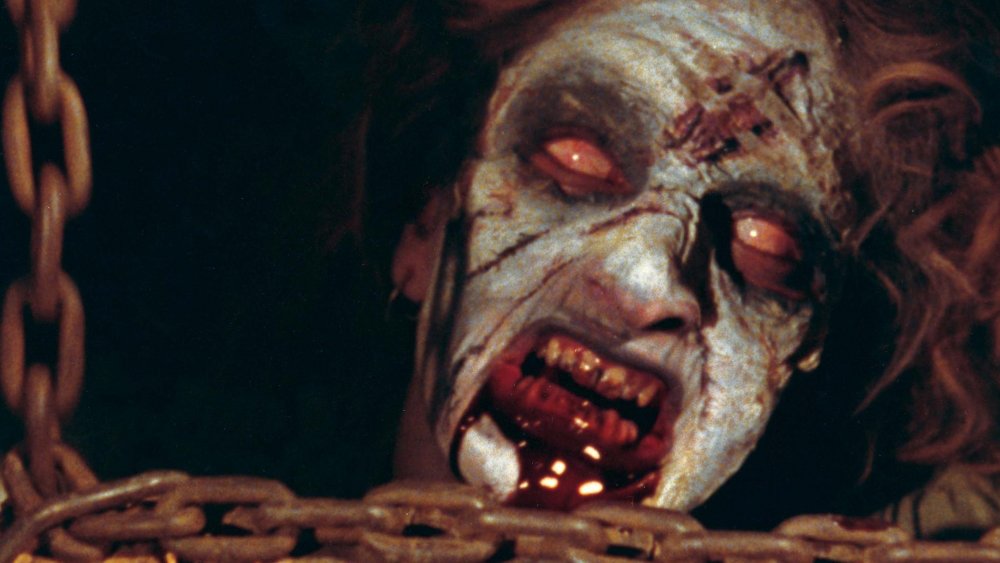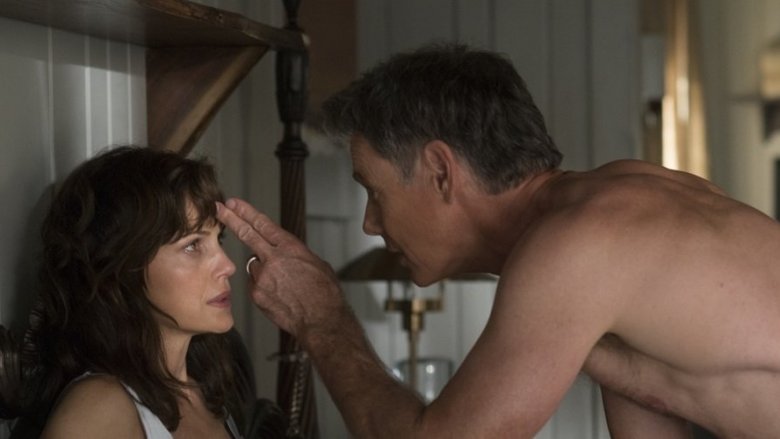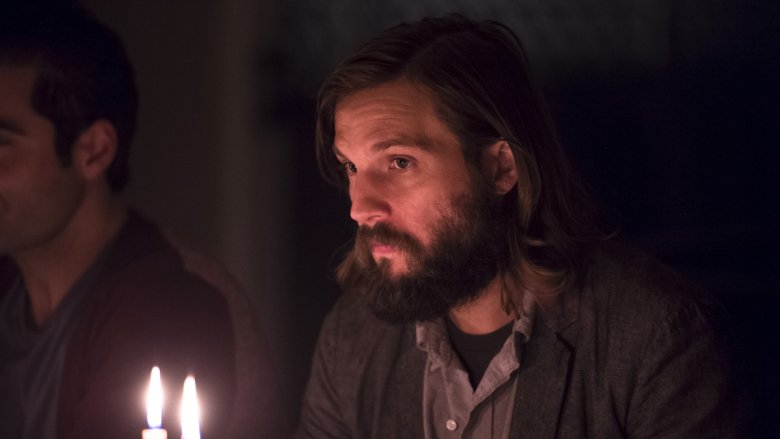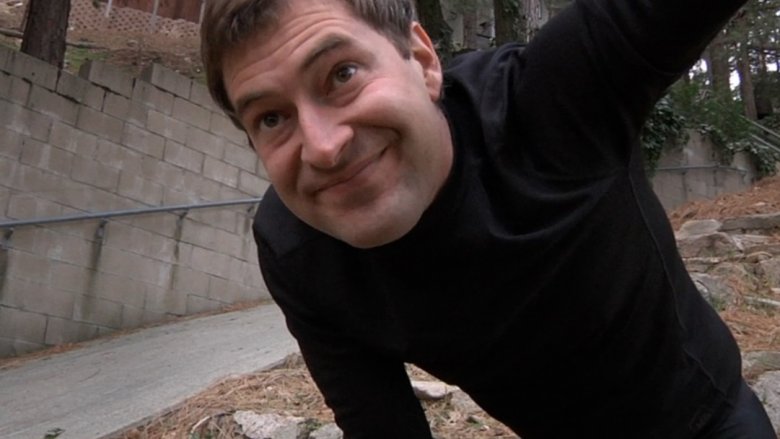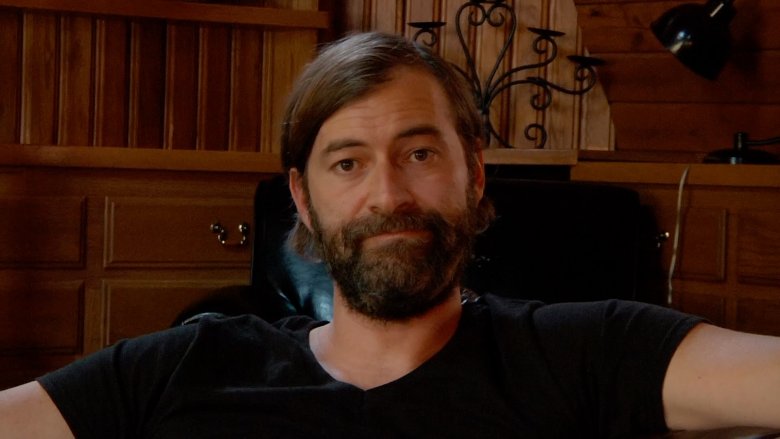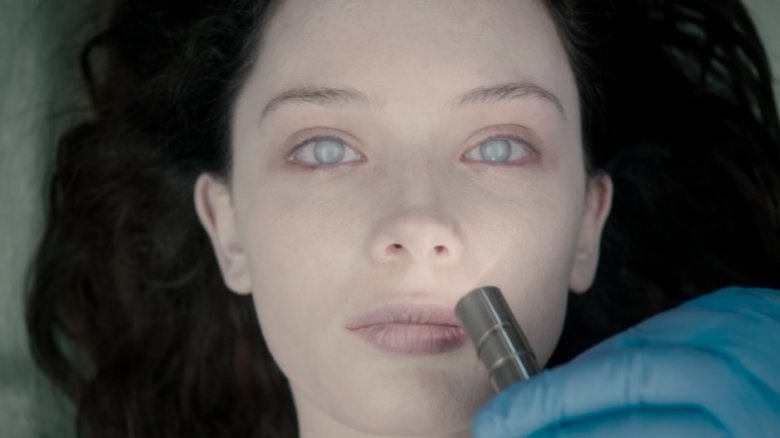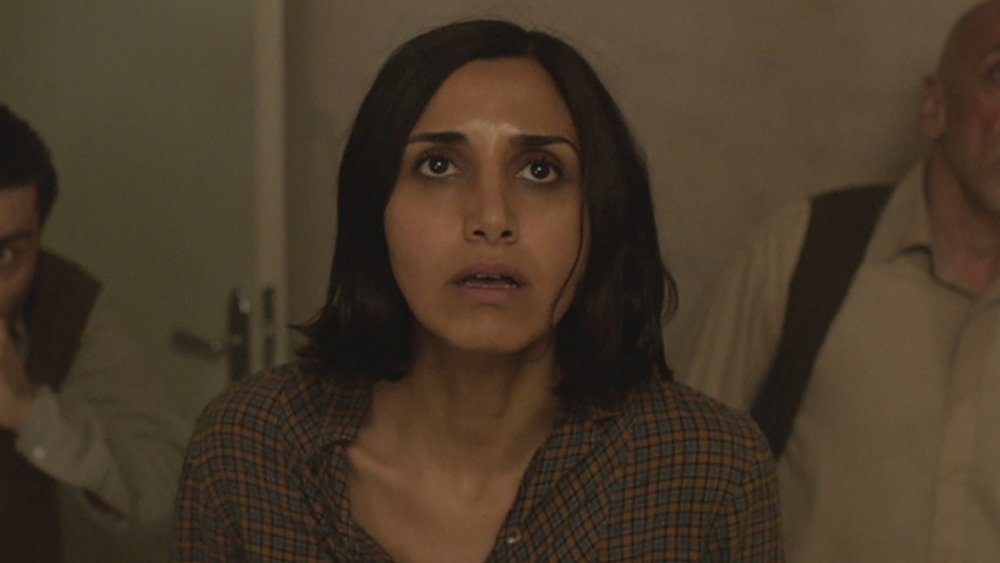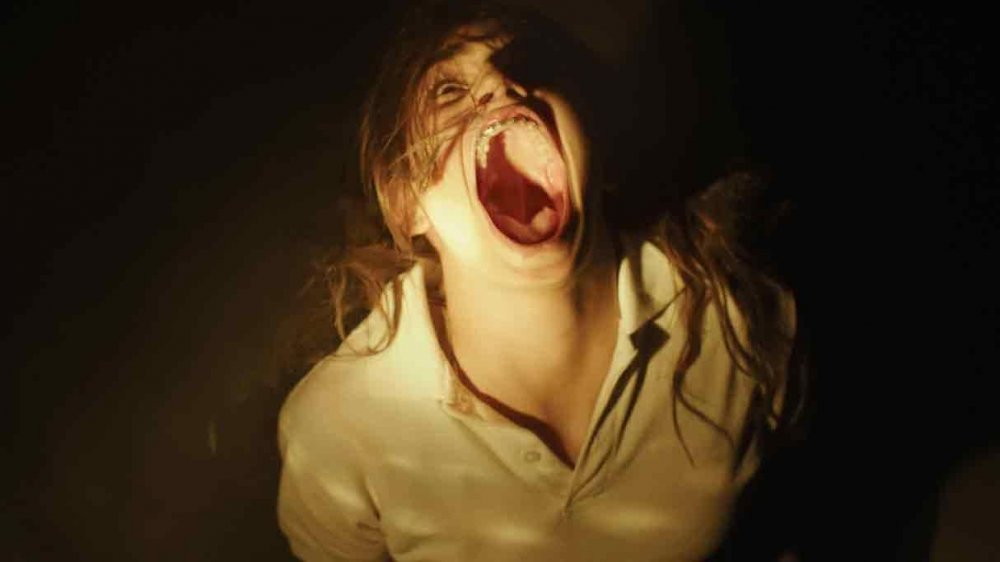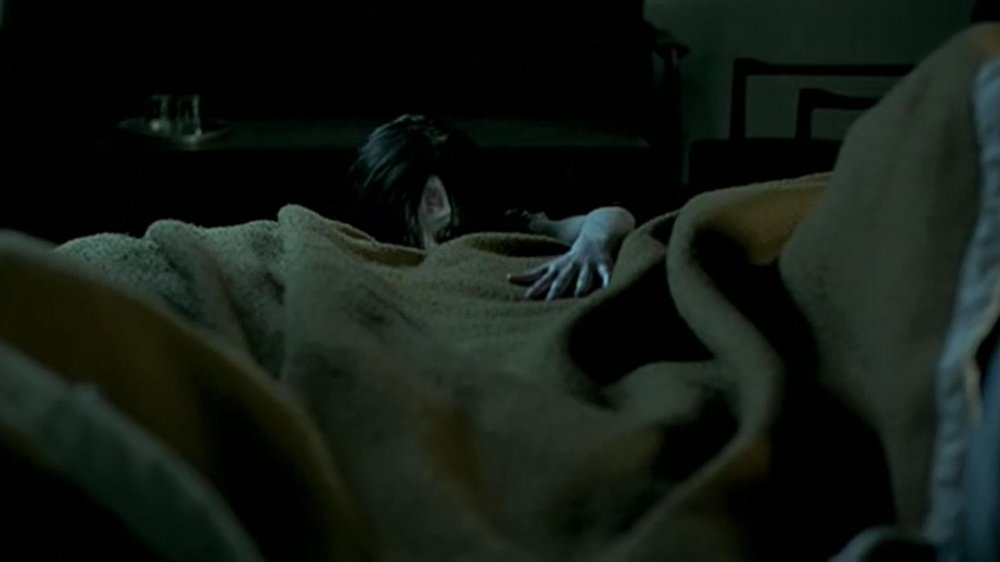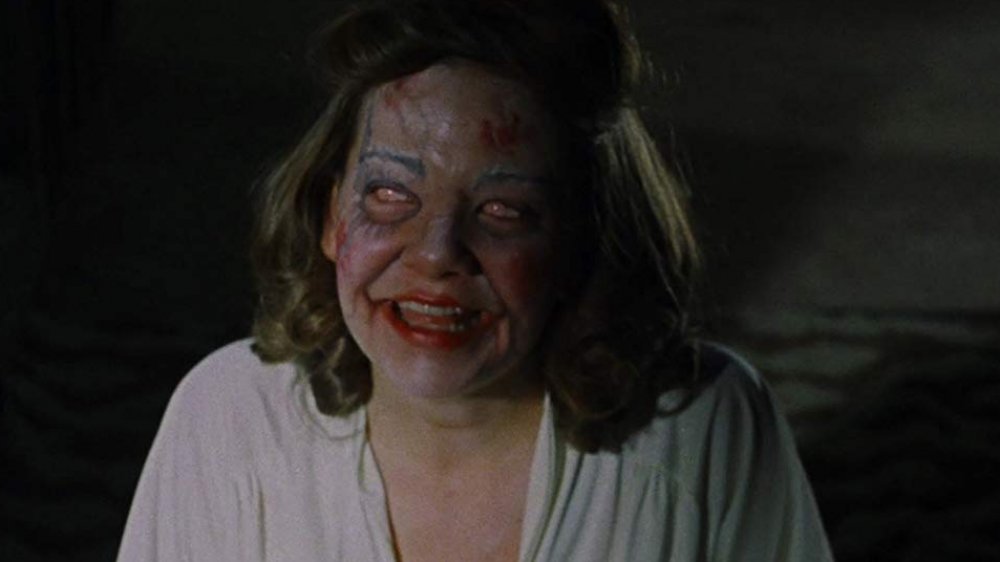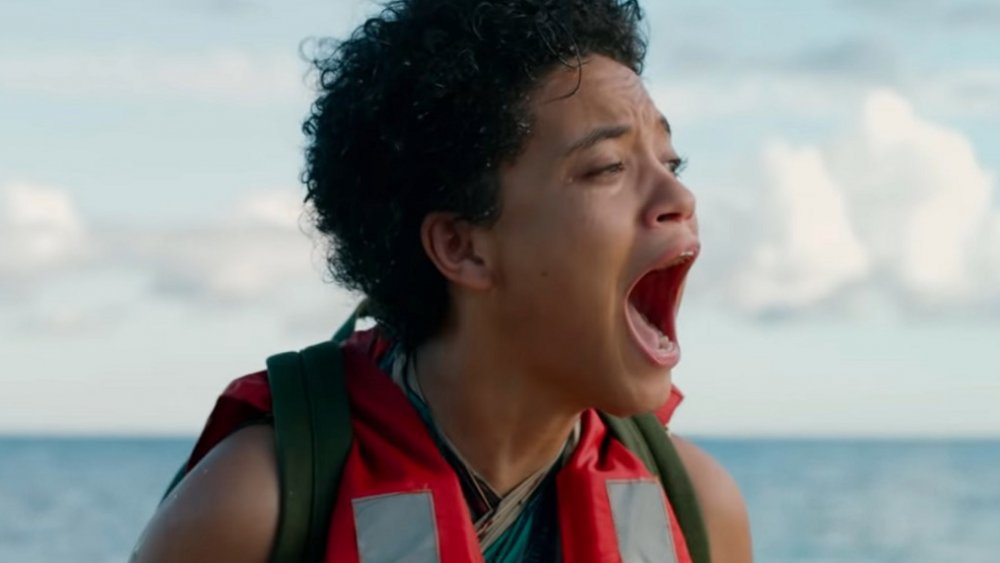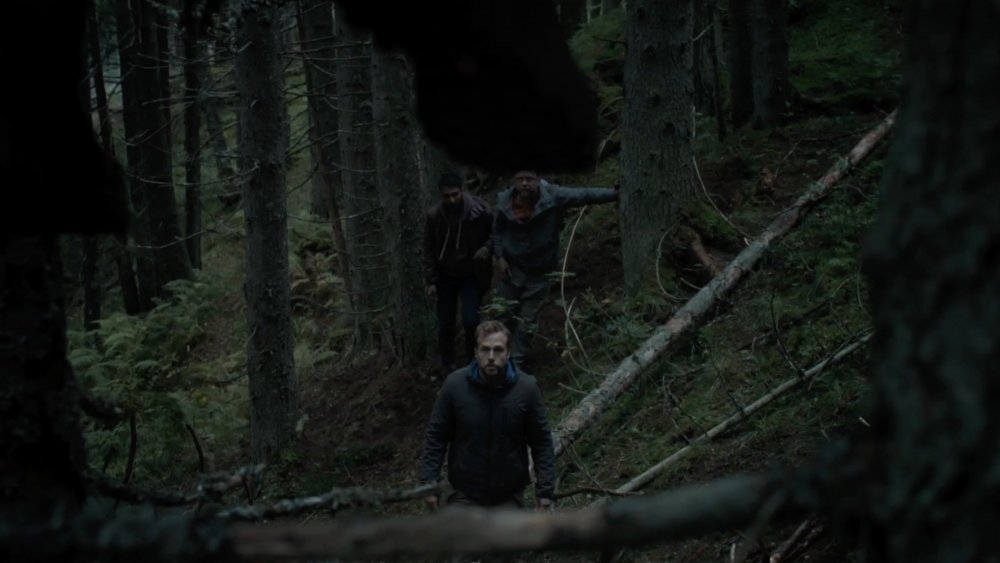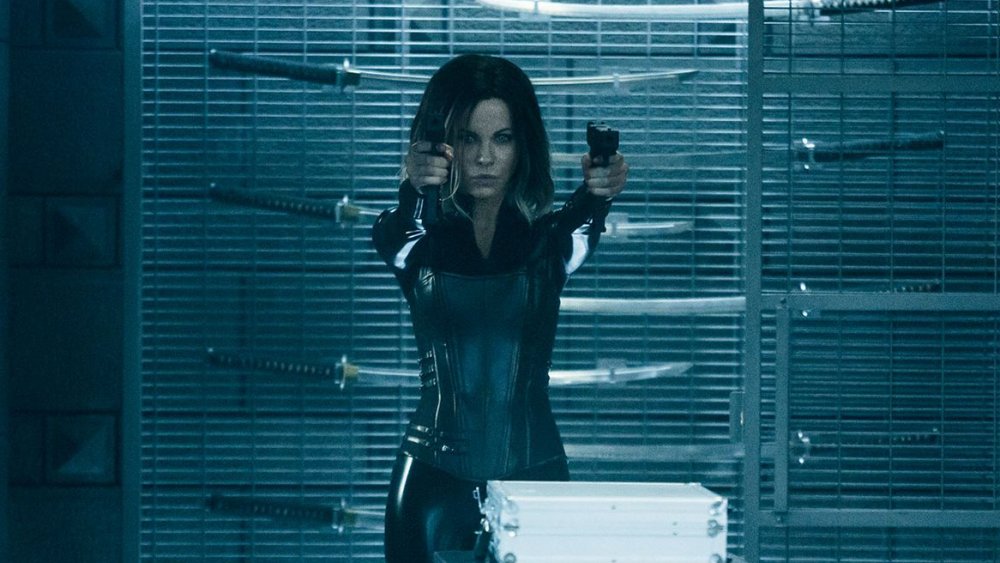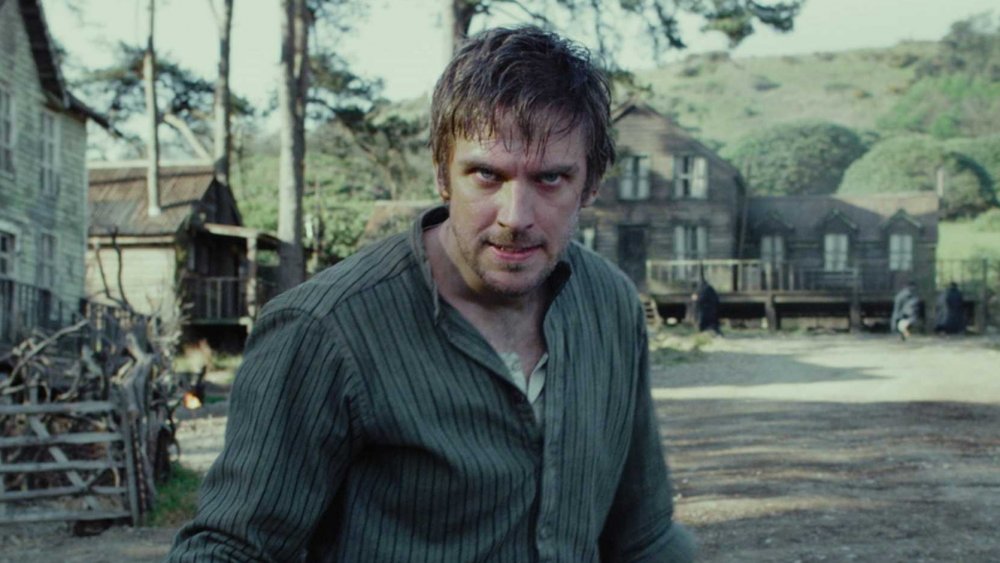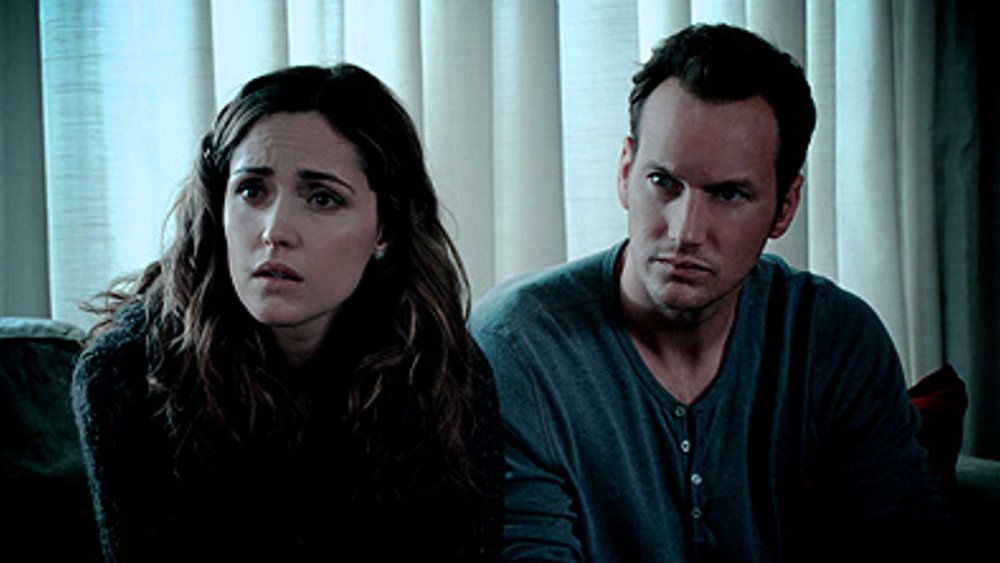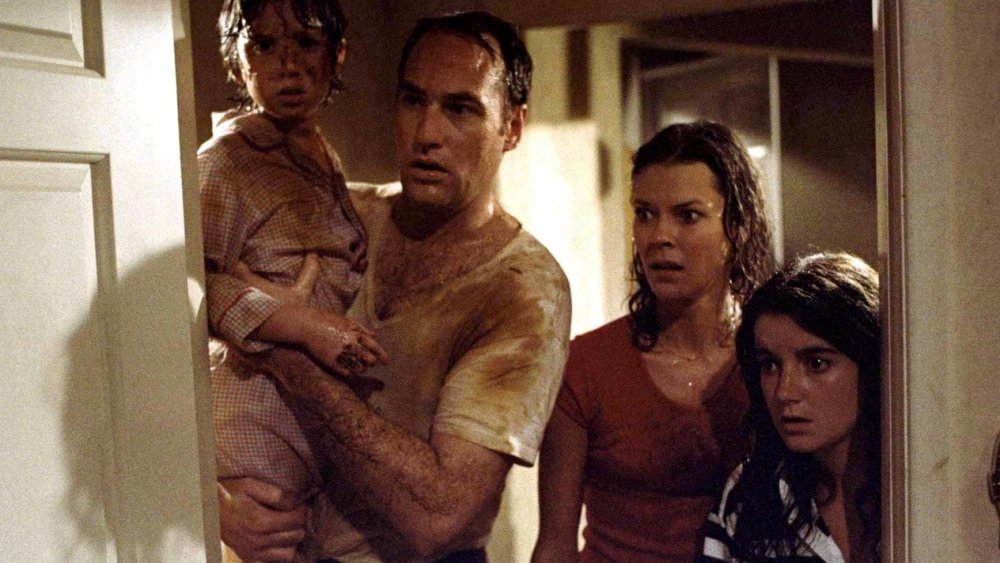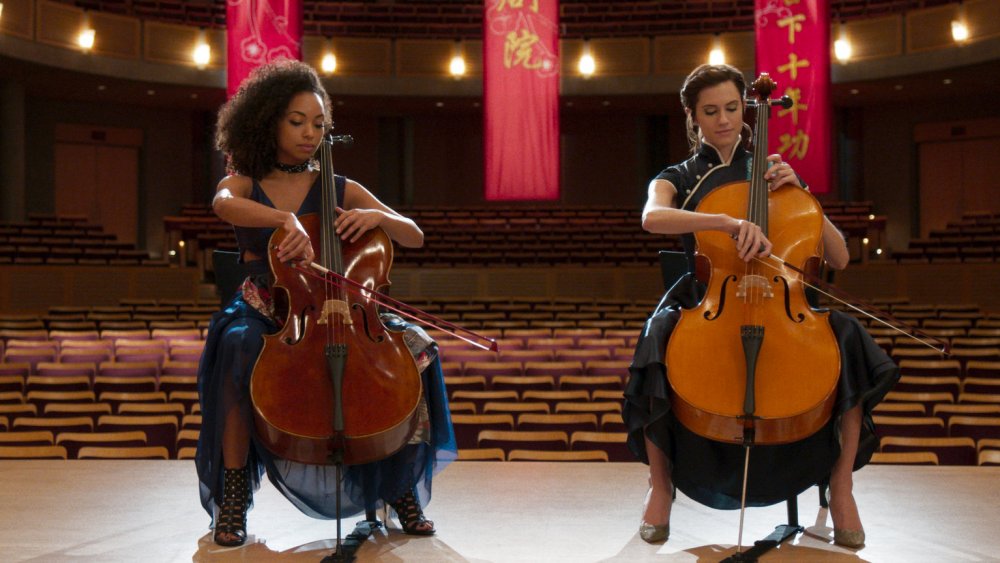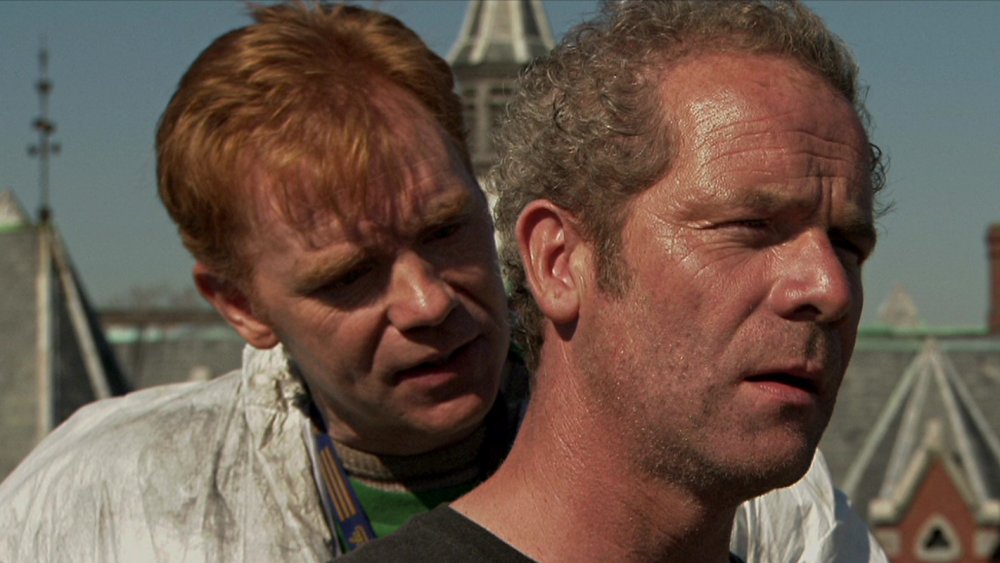The Best Horror Movies To Stream On Netflix Right Now
Much like ghosts, your favorite horror movies on Netflix seem to appear only when you're not looking for them... and fade away as soon as you try to verify their existence. Trying to keep track of what's currently streaming, what will be streaming, and what's actually good is enough to make anyone feel like giving up and just watching a comedy instead. But while hunting down the best horror movies can sometimes feel like solving the Lament Configuration, there's a pattern to it all.
If you're scared by how difficult it is to get scared by Netflix, have no fear; we're keeping track of the very best horror movies that you can stream on Netflix right now. Whether you're looking for the perfect slow burn to introduce a horror hater to the genre, looking to watch a certified horror classic you've missed, or anything in between, we've got you covered. From zombies to ghosts to murderers to the devil, here's a rundown of the best horror movies on Netflix.
Gerald's Game will keep you chained to your couch
The horror genre is often at its best when translating the internal to the external, turning the personal fear into a boogeyman that anyone can relate to. In the case of Gerald's Game, a Netflix original by horror maestro Mike Flanagan, the internal is externalized to an almost absurd degree. Based on the novel by Stephen King, Gerald's Game seemed entirely unfilmable, since nearly the entire story takes place in a single room following one character. Both the novel and the film follow Jesse (Carla Gugino), a woman on a vacation getaway with her husband Gerald (Bruce Greenwood) in an effort to rekindle their flagging relationship.
Unfortunately, Gerald's got a bondage fetish, and it's so extreme that it involves real handcuffs, and some very extensive role play. To make matters worse, Gerald's got a weak heart, and he dies while Jesse's handcuffed to the bed with no one else around for miles. Nearly the entire story, minus some flashbacks, takes place on the bed as Jesse's left to contemplate what led her to this situation.
It's the kind of setting that could easily lead itself to an incredibly boring cinematic experience, but Gugino's powerful performance and Flanagan's steady escalation of tension and danger manages to make a single room feel endlessly interesting. Be warned, however: while Gerald's Game has plenty of internal horror, anyone squeamish about gore should be prepared for an incredibly visceral climax.
Accept The Invitation to a spooky good time
For plenty of people, the scariest possible situation in life has nothing to do with occult rituals gone wrong (or right) or being trapped in the wilderness. For some people, the scariest thing in life is having to go to a dinner party with people you don't actually like. That seems to be the genesis behind The Invitation, which follows Will (Logan Marshall-Green) and his new girlfriend Kira (Emayatzy Corinealdi) as they attend a dinner party hosted by Will's ex-wife and her new boyfriend.
As you can probably guess since the movie's on this list, things go awry in slightly more horrific ways than a Wes Anderson movie, but to say more would spoil some of the fun of the movie. What we can say is that The Invitation has some of the best slow-building tension you're likely to get from any movie, along with performances that engross you in the character's drama before you'll even notice. It will also probably keep you from accepting any dinner invites from friends for a while, so maybe take some time to let your pals know before you watch the film.
Creep will get under your skin
Few things are more uncomfortable than being trapped in a social situation with someone who's either oblivious or intent on ignoring social cues. That could be the line of thinking that led to Creep, a found-footage horror movie about a videographer named Aaron (Patrick Brice) who finds himself working for the very strange and very creepy Josef (Mark Duplass). Aaron's been asked to film a series of messages for Josef's unborn son before Josef succumbs to terminal cancer, and he's been offered enough money to offset some of Josef's odd behavior. That is, until Josef pulls out a wolf mask and starts talking about his wife.
As with most found footage horror movies, there are moments that might make you scream at your screen to turn off the camera and start running. Nevertheless, Duplass and Brice, who also wrote the movie together, have enough chemistry that you understand why Aaron sticks around. It's not a film that's likely to convince avowed found footage haters to embrace the subgenre, but it's definitely one of the best no-budget horror movies around.
Creep 2 is even better than the original
Sequels can be a real coin toss, especially in the horror genre. The joy of discovery and mythology building doesn't always translate to a franchise, no matter how good the original film was. Luckily, Creep 2 is an improvement over the original in nearly every way, presenting a new story that builds on the experience of watching the first film. Here's your spoiler alert for the original Creep before we get to talking about the sequel.
The original made it clear that Mark Duplass' character is a serial killer with an obsessive streak towards documenting his kills, but Creep 2 finds the titular creep (now going by Aaron) burnt out on murder. He's looking for something to light his creative spark again, so he hires another videographer, Sara (Desiree Akhaven), to create a documentary about his life as a serial killer.
What makes Creep 2 so immediately engrossing is that Sara is fully willing to play along with Aaron. She's obsessed with creating genuine art through her documentaries about weirdos online, and she sees Aaron, whether he's a real serial killer or not, as the perfect subject. That constantly shifting power dynamic plays out between them in Creep 2, and it's a strange, moving portrait of two characters who both have some serious issues to work out.
The Autopsy of Jane Doe will keep you up at night
Certain things lend themselves to horror more than others. Sure, you could probably make a horror movie about an evil bowl (in fact, someone has), but generally it's easier to turn something that's already a little spooky into real horror. The Autopsy of Jane Doe manages to make working in a morgue even scarier by bringing in plenty of body horror and a Jane Doe (an anonymous female corpse) that might not be as dead as she seems.
With director André Øvredal (Troll Hunter) at the helm, The Autopsy of Jane Doe is as tightly paced and inventive as you would expect. As things get worse in the morgue and the father-son team race to find out what actually killed their mysterious Jane Doe, tension builds like a game of Jenga on a fault line. If nothing else, watching this movie will probably make you grateful that you have a job that doesn't involve slicing open dead bodies for a living.
There's something on the wind in Under the Shadow
One of the best things about the horror genre is the way it can take personal fears and make them universal. You might not know what it's like to live in a war zone, but you can probably relate to the struggle to keep your family safe from an uncaring danger if it's visualized as a monster. Under the Shadow follows Shideh (Narges Rashidi), a former medical student barred from resuming her studies because of her time as a leftist activist.
To make things worse, Shideh lives in Tehran during the Iran-Iraq war in the 1980s, which saw the city become a major target for bombing. Shideh's husband is conscripted, leaving Shideh and her young daughter in an apartment complex where they have to flee to the basement as soon as they hear the bomb siren. There also might be a djinn haunting the apartment, looking to steal Shideh's daughter away from her.
Under the Shadow bears some loose similarities to The Babadook — both are about young mothers trying to protect their child from a malevolent supernatural entity that might not even be real. Still, while The Babadook is almost claustrophobically internal, Under the Shadow is painfully external. Shideh and her daughter might not have the best relationship, but every moment of their lives is made worse by the constant, looming threat of violence. Whether it's a djinn or a missile, there really is something out on the wind that can take Shideh's daughter away if she doesn't protect her with all her might.
Horror has a new name in Veronica
Stop us if you've heard this one before: a young girl, burdened by issues at home, suddenly finds herself at the mercy of a supernatural entity that seems to be pushing her down a dark path. Veronica sounds like a few dozen other horror movies from the logline alone, but plot isn't everything in horror. What sets Veronica apart is the steady, versatile directing of Paco Plaza (probably best known to American audiences as the director of the original REC) and a wonderful lead performance from Sandra Escacena as the titular young woman.
If you've seen one exorcism movie, you've seen most of them, but Veronica demands your interest with the smaller details: children with photo negatives covering their eyes as they gaze at an eclipse; Veronica using music and headphones to briefly escape her responsibilities as a surrogate mother for her siblings; the mutable nature of high-school friendship. When Veronica first dropped on Netflix, plenty of sites heralded the film as one of the scariest films ever made. While that might not be true for everyone, Veronica's certainly worth a watch.
Shutter will make you shudder
As Bong Joon-Ho and his translator, Sharon Choi, memorably said at the 77th Golden Globes, "Once you overcome the one-inch-tall barrier of subtitles, you will be introduced to so many more amazing films." That sentiment rings just as true in horror as it does in any other genre. Buried in Netflix's horror offerings is the 2004 Thai horror film Shutter. The film follows a couple who begin to see ghostly images in their photos after a horrifying roadside accident.
The film will likely feel familiar to anyone who got really into J-horror in the early 2000s — although Shutter is a Thai production, the ghost, with its long, black hair, wide eyes, and dripping wetness bears no small similarity to Sadako from The Ring or Kayako from The Grudge. That said, although Shutter seems like a fairly standard haunting horror, the film comes armed with a ruthless pace and surprisingly tight script. For nearly the entire first hour, the ghost's presence is simply relentless. By the time you (and the characters) are given room to breathe, the story's turned out to be much more complicated and twisted than it first appears.
Shutter proved scary enough to spawn a remake starring American actors. Oddly enough, though, the story was moved to Tokyo, and Japanese director Masayuki Ochiai helmed the remake. Regardless, don't bother with the remake; instead, just overcome that one-inch barrier, and dip your toes into the terrifying waters of Thai horror.
The Evil Dead lives on for a reason
The Evil Dead looms large over modern horror. Partially, that's due to Sam Raimi's continued status as a beloved cult filmmaker (who also made Spider-Man). Partial credit also goes to the surprisingly long legs that the franchise has had in pop culture, with multiple sequels, comic book tie-ins, a cancelled crossover film with Friday the 13th and The Nightmare on Elm Street, multiple video games, and even a well-regarded television show on Starz. Still, all the franchises, memes, and success of both director Raimi and star Bruce Campbell shouldn't distract from the original Evil Dead film being a pretty great horror movie.
Nearly everyone involved in the production has been pretty up-front about how funding for the film was barely secured after begging, borrowing, and stealing from everyone they knew. Unlike plenty of other low-budget horror movies, however, The Evil Dead makes a stupendous use of the scant budget available. Monsters look truly monstrous, while the one filming location available builds the claustrophobia around the characters and the audience alike. At the center of all the horror is Campbell's beleaguered everyman Ash, who is not yet the wisecracking Deadpool-esque cheeseball that he'd be in later films. Campbell gives a solid performance, and while later sequels would emphasize the Looney Tunes-style comedy, The Evil Dead is a lean, terrifying little thriller. Minus one truly uncomfortable scene that even Raimi himself regrets putting in the film, The Evil Dead is a classic horror film for a reason.
No woman is an island in Sweetheart
At this point, Blumhouse Productions has carved out an undeniable niche in the cinematic marketplace by producing low-budget, high-concept horror films. Whether they're producing critical and commercial smashes like Get Out or slightly less-popular horror sequels like Amityville: The Awakening, you can pretty much count on a movie produced by Blumhouse to at least be interesting. Luckily, Sweetheart lands closer to Get Out than Amityville on the Blumhouse quality spectrum.
Sweetheart tells the story of Jennifer (Kiersey Clemons), a woman who washes up on a seemingly deserted island after a storm. The island seems to have plenty of food, but there are also clear indications that other castaways have washed up on its shore. As Jennifer explores the island early in the movie, the film is almost entirely dialogue-free. There's no narration, and Jennifer doesn't have a convenient habit of talking out loud while puzzling things out. Instead, Sweetheart relies almost entirely on Clemons' extraordinary physical acting, letting the camera simply follow Jennifer as she figures out whether or not she's alone on the island... and whether that's a good thing or a bad thing. Throw in a pleasingly synth-heavy score, and you've got an exceedingly solid Netflix horror movie to while the night away.
The Ritual brings old ingredients to life in a new way
Horror movies about getting lost in the woods and finding some sort of monster or evil entity are a dime a dozen — sometimes literally that price if you're cruising through an especially cheap used movie store. As with any genre trope, there are good examples and bad examples, well-known forest horror flicks and completely unknown variations. Ultimately, it comes down to what kind of spin the filmmakers can put on the well-worn formula. Whether that means subverting expectations or just hitting the notes with exceptional aplomb, there are plenty of ways to breathe new life into a seemingly dead subgenre.
Speaking of breathing new life, 2017's The Ritual turned out to be far better than its summary would imply. After the death of their friend during a convenience store robbery, four pals venture into the Swedish woods on a hiking trip to mourn him. We're sure that you can guess what happens next, but the beauty of The Ritual is how it refuses to let a familiar conceit define the movie. Questions about one of the group's culpability in their friend's death creates drama, even when our protagonists aren't running into crucified deer carcasses or terrifying statues. We don't want to spoil the very best attribute of the film, but know that The Ritual has one particular aspect that will truly impress even the most hardened horror film buff.
Underworld captures a certain aesthetic
Sometimes a film comes along at exactly the right time and, for the right group of fans, becomes the perfect encapsulation of their particular pop culture aesthetic at that time. Underworld, director Len Wiseman's 2003 film about a vampire who hunts werewolves amid a centuries-old conflict, is one of those films.
Starring Kate Beckinsale as vampire "Death Dealer" Selene, Underworld follows its hero as she tries to navigate the complex politics of vampire society, while also growing closer to a human man who's had a run in with the Lycans (werewolves) that may cost him his life. In the process, she uncovers a secret that shakes her to her core... and, conveniently, sets up a sequel.
For a certain kind of pop culture consumer in the early 2000s, Underworld was the perfect movie. It had skintight black outfits, sexy British accents, gorgeous Gothic visuals, a complex mythology you could really sink your teeth into, and an absolutely killer soundtrack. For some streaming viewers, it'll take them back to their brooding high school years. For others, it'll be a very fun horror-fantasy to watch for the first time.
Apostle is part of a rich tradition
When it comes to the folk horror subgenre, The Wicker Man is the gold standard against which all other films are measured, and it's often a joy to see how various other films riff on and pay tribute to that classic. One thing worth noting about The Wicker Man is, of course, that it's a slow-burn film that waits until almost the very end to reveal the full horror of Summerisle and its people. If you're looking for a film that plays with some of the same ideas but leans much harder into the horror elements, Gareth Evans' Apostle is for you.
The film follows Thomas (Dan Stevens), a man who visits an island off the coast of Wales in search of his sister, and finds a cult driven by a charismatic leader (Michael Sheen) who is convinced of the island's mythology, which says a blood sacrifice is what made it the lush, green paradise it seems to be now. What begins as a somewhat straightforward mystery surrounding the cult soon turns much more horrific, as Thomas learns that the folk stories about the island are truer than he realized.
Apostle may not ever live up to The Wicker Man in terms of sheer aura, but it succeeds in different ways because it's willing to go further and deeper with its folk horror mythos. The result is an intense, haunting movie driven by two stellar lead performances.
Insidious packs a punch
Some horror films focus all their energy on a single, horrifying entity, whether that's a maniac with a knife or a malevolent spirit haunting an old house. Others take the "more is more" approach, piling on creature effects and jump scares and extra antagonists until you're absolutely overwhelmed by the horror of it all. Insidious, from director James Wan and writer Leigh Whannell, is in the latter category, and the results are loads of scary fun.
The film follows the classic ghost story formula of a happy family moving into a new home, only to find something has gone horribly wrong with their son. With their boy in a coma, parents Josh (Patrick Wilson) and Renai (Rose Byrne) are desperate for answers even as their house seems to be growing increasingly hostile. As ghosts and tragedy surround them, they seek out a medium named Elise (Lin Shaye), who tells them a horrifying truth that they may not be prepared for.
In the grand tradition of Poltergeist, this is a film that's not just about one ghost, but a whole host of evil entities who set out to terrorize a family by using a child as a gateway, and while it may not be quite the classic that Poltergeist is just yet, there's a lot to love in Insidious. The scares come fast and intense, and each new entity is more horrifying than the last.
Poltergeist brings the classic haunted house story to '80s suburbia
Sometimes you just have to go with a classic, whether you've been browsing for hours unsure of what to watch or you're just eager for some horror movie comfort food. In that regard, it doesn't get much better than Poltergeist.
Director Tobe Hooper and writer/producer Steven Spielberg's film remains one of the most effective, iconic haunted house movies of all time, one that remains remarkably timeless despite occasionally dated visual effects and a set design that places it firmly in the territory of the 1980s. This story of a family who moves into a new home and quickly finds they aren't alone holds up remarkably well, thanks in no small part to just how human it feels. Just about everyone can identify with at least one member of the Freeling family, whether you identify with their individual goals and desires or with the things that terrify them, and that roots the movie in a sense of reality that still reaches out and grabs you.
Of course, if that's not why you're watching Poltergeist, you'll still find a lot of things to love. The scares in the film, from faces sloughing off in sinks to skeletons in a hole to that creepy clown doll, are still effective nearly 40 years after the film was first released, so whether you've seen it a dozen times or you're arriving at it for the first time, Poltergeist can still feel brand new.
The Perfection is a perfect blend of wild twists
Some horror movies spend their entire runtime building to a single major moment, whether that moment is an explosion of violence, a major plot twist, or both. Then there are those movies that start with a wild moment, then keep building and building and building until you're so embedded in the chaos that you can't wait to see how it all turns out. Richard Shepard's The Perfection is in the latter category, and the result is a darkly comic blast of horror.
The film follows a pair of classical musicians (played by Allison Williams and Logan Browning) who each rose to prominence under the tutelage of the same legendary teacher. What begins as a friendly rivalry soon evolves into an absolutely unhinged game of manipulation and violence, but all is not as it seems. By the time The Perfection is over, it becomes a tale of two women going to great lengths to ensure their freedom, no matter what the cost, because the system that took them in has done nothing but chew them up and spit them out.
Anchored by delightfully wild performances from Williams and Browning and featuring a couple of truly delicious twists, The Perfection is one of the great unsung horror successes of recent years, and deserves more attention.
Session 9 is drenched with spooky atmosphere
The horror genre has always been a place for low-budget invention, whether we're talking about the rapid fire shooting of Roger Corman films or the found footage allure of The Blair Witch Project. It's a genre where less is very often more, and terrifying stories can be told almost entirely from a single location. Session 9, an exercise in psychological terror from director Brad Anderson, is a masterclass in getting the most out of a relatively small movie.
The film follows an asbestos removal crew who takes a job cleaning out an abandoned mental institution. Eager for the bonus pay they'll get if they finish the job fast, the crew launches into an exhausting marathon of work, but then things start to get weird. One member of the crew finds an old lobotomy pick hidden away with other trinkets, while another stumbles upon audio recordings of a former patient at the asylum, who seems to be revealing different personalities on each tape. As the job goes on, it becomes clear that a darkness is stalking them, and it's a darkness as much rooted in the asylum itself as it is the disturbed past of one of their own.
Featuring brilliant performances from David Caruso and Peter Mullan and some beautifully understated horror directing from Anderson, Session 9 is one of the ultimate less-is-more horror movies — proof that creating an atmosphere is often more important than jump scares and gore effects.
